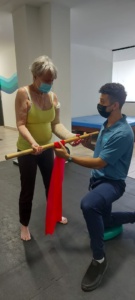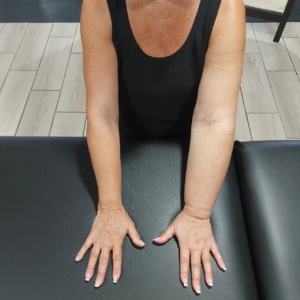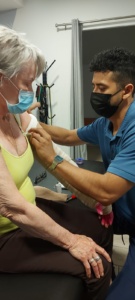The lymphatic system is a network of organs, lymph nodes, lymphatic ducts, and vessels that produce and transport lymph from tissues to the bloodstream.
Among the important functions of the lymphatic system are the transport of proteins, the removal of excess water, viruses, cellular debris, bacteria and other foreign substances from the body’s tissues which can only be removed through the lymphatic vessels.
The most common sign that there is a problem with the functions of the lymphatic system is the appearance of edema, or accumulation of fluid in the interstitial space (fluid that surrounds the cells of different tissues).
The resulting edema, or accumulated fluid is rich in proteins and gives rise to an increase in size or swelling of the affected body region. The effect from this backup is called lymphedema.
Lymphedema is classified as primary or secondary, however, the common denominator in both is failure in lymphatic transport.
• Primary lymphedema is due to alterations of the lymphatic system that originate before birth and may or may not manifest throughput a person’s life.
• Secondary lymphedema is due to injury, obstruction or infiltration of lymphatic vessels or nodes by tumors, infections or surgery. Cancers that block lymph vessels can also cause lymphedema
IS IT POSSIBLE TO PREVENT?
A lymphedema therapist can help you in the assessment and management of lymphedema as well as risk reduction if you think you may be susceptible.
Steps you may be advised to take to prevent lymphedema or keep it from getting worse:
• Protect your skin by applying sunscreen and moisturizing lotion. Attend to cuts, scratches or burns quickly and keep nails short to prevent ingrown nails and infection. Avoid tight shoes and jewelry.
• Exercise. Work to keep body fluids moving, especially in places where lymphedema has developed. Start with gentle exercises that help you to move and contract your muscles. Your doctor or physical therapist can tell you what exercises are best for you.
• Manual lymph drainage. See a certified lymphedema therapist to receive a type of therapeutic massage called manual lymph drainage. Therapeutic massage works best to lower lymphedema when given early, before symptoms progress.
• Compression bandages or garments such as sleeves, stockings, bras, gloves and face or neck compression wear.
TREATMENT
Lymphedema can get worse if it is not treated so you should seek consultation if you think you might have the condition. There is no cure for lymphedema, but it’s possible to control the main symptoms using techniques to minimize swelling and stimulate the flow of fluid through the lymphatic system. A multidisciplinary approach to managing lymphedema has proven to be the best option to reduce swelling. The combination of different treatment techniques applied soon after diagnosis has proven to greatly improve the patient’s quality of life.
CAN PHYSICALTHERAPY HELP?
A lymphedema physical therapist in consultation with your physician can explain the methods available to manage lymphedema and help ensure that you understand the problem and are involved in the treatment.
At Physio Vallarta we offer offer physical therapy for lymphedema. Sebastian Peña, a certified lymphedema therapist is available to help you.
Call us to make an appointment +52 322 365 0721





